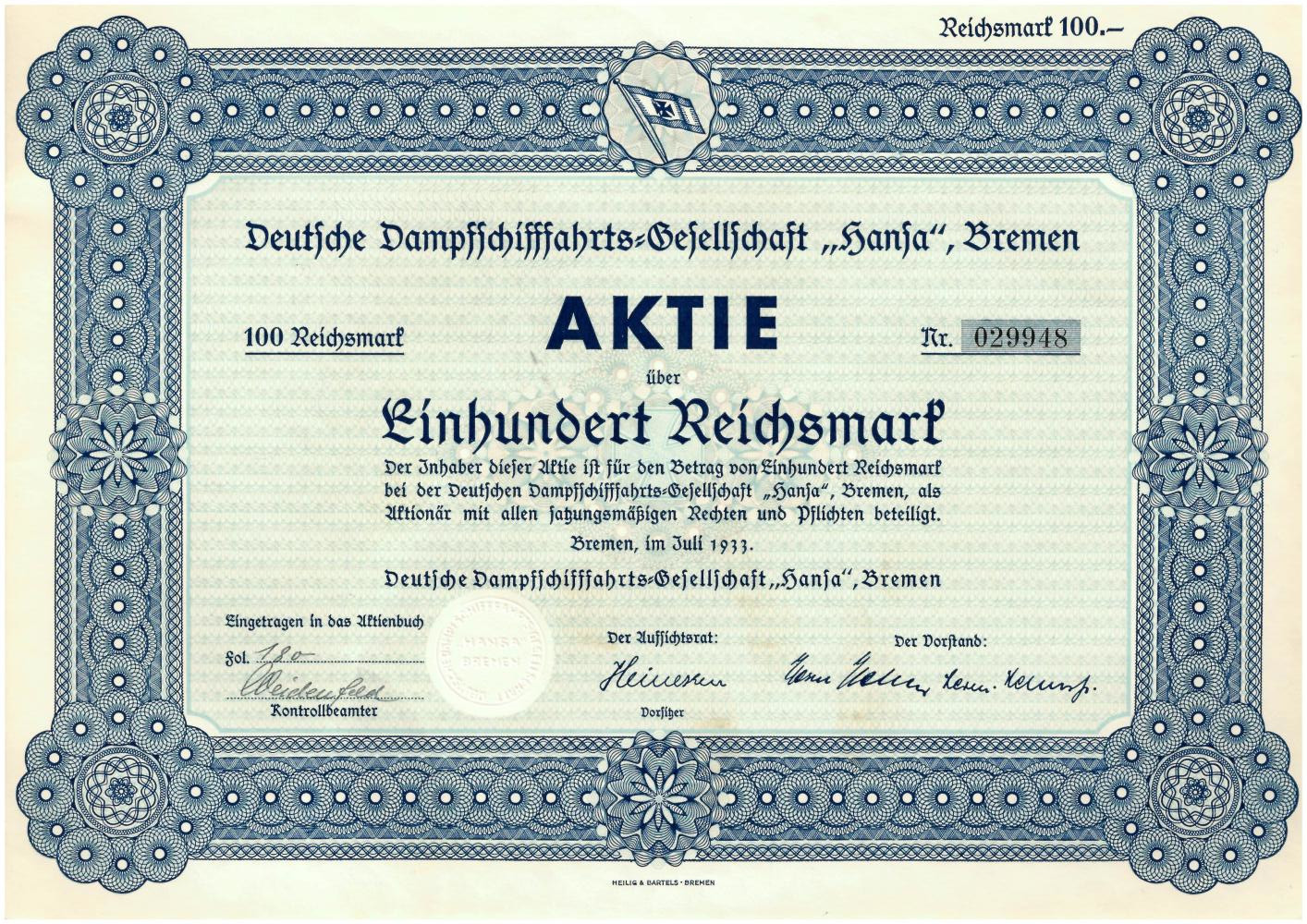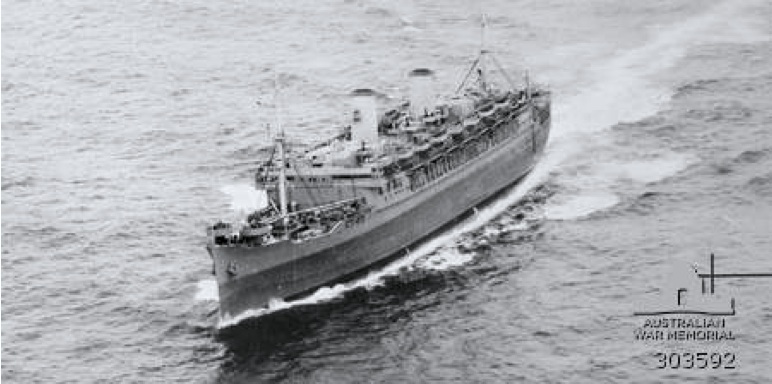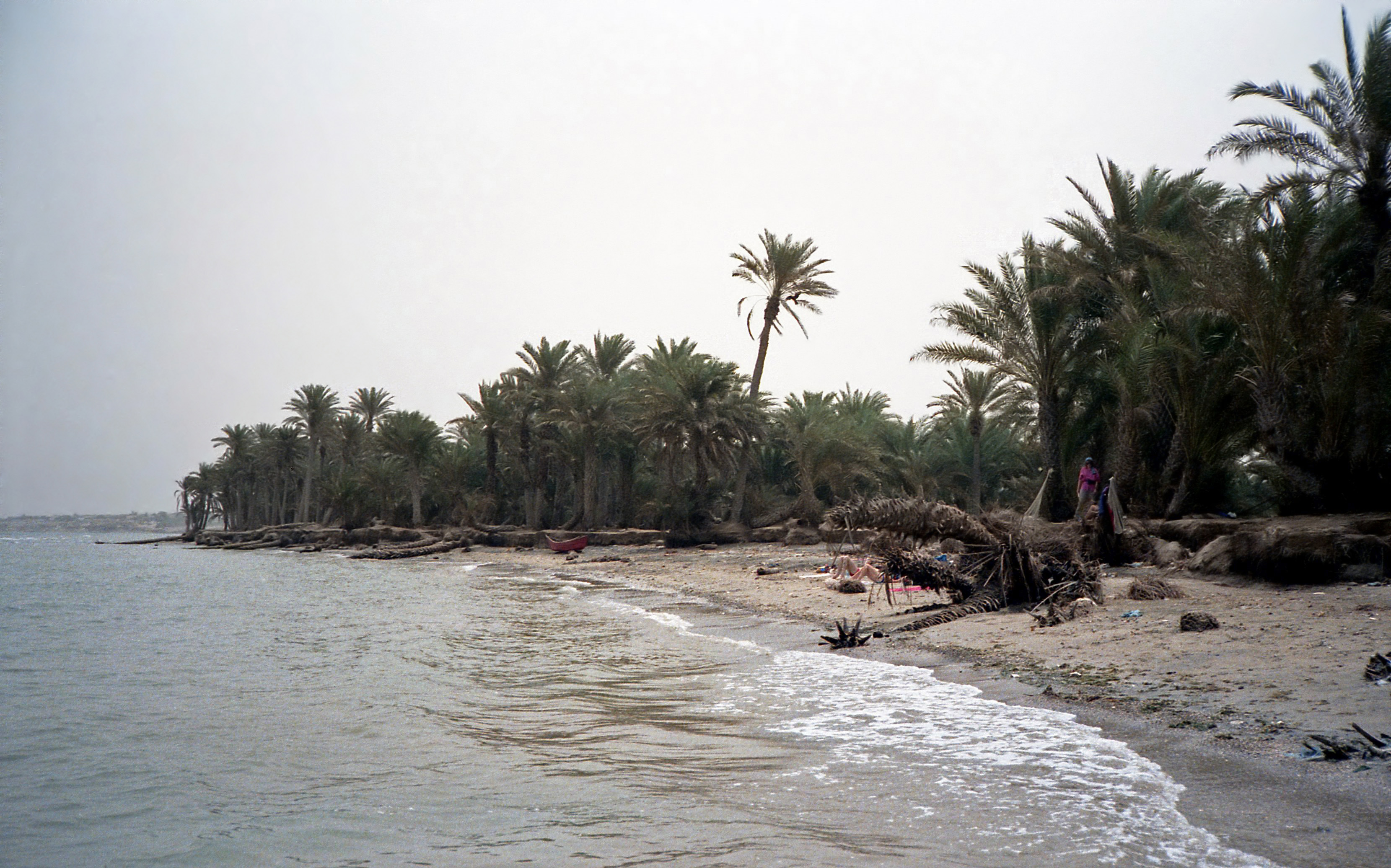|
SS Karsik (1938)
SS ''Karsik'' was a German-built cargo steamship. Deutsche Schiff- und Maschinenbau (Deschimag) built her as ''Soneck'' for Deutsche Dampfschifffahrts-Gesellschaft "Hansa" in 1938. The Royal Netherlands Navy seized her in the Dutch East Indies in 1940. She was renamed ''Karsik'' and the Dutch Koninklijke Paketvaart-Maatschappij (KPM) operated her until 1963. In 1963 she was sold, renamed ''Pearl of Victoria'' and registered in Panama. She was wrecked in the Red Sea in 1967. Building Deschimag built ''Soneck'' at its Seebeckwerft in Wesermünde, which is now part of Bremerhaven. As built, her tonnages were and . ''Soneck'' had a three-cylinder triple-expansion engine plus a Bauer-Wach low-pressure exhaust steam turbine. Exhaust steam from the low-pressure cylinder of the triple-expansion engine powered the turbine. The turbine drove the same shaft as the piston engine by double-reduction gearing and a Föttinger fluid coupling. The combined power of her piston engine and t ... [...More Info...] [...Related Items...] OR: [Wikipedia] [Google] [Baidu] |
DDG Hansa
DDG Hansa, short for Deutsche Dampfschiffahrts-Gesellschaft Hansa (German Steamship Company Hansa; in modern orthography, Deutsche Dampfschifffahrts-Gesellschaft Hansa) was a major German shipping company specialising in heavy freight and scheduled traffic between Europe and the Far East. Founded in Bremen in 1881, the company declared bankruptcy in 1980. History Foundation and early years DDG Hansa was founded on 3 December 1881 at the "constituent general assembly" in Bremen by a consortium of 17 Bremen and 2 Bremerhaven companies,"The DDG Hansa, 1881–1980—a missed centenary", in ''100 Years Ahlers in Antwerp: A family business in a world port'', ed. Christian Leysen and Olivier Boehme, Brussels: ASP/University Press Antwerp, , pp. 24–28p. 24 to provide steamship connections for trade with Asia, the Baltic, and the Mediterranean. The first voyage was by SS ''Stolzenfels'' from Newcastle to Singapore in February 1882.Raymond Fisch, "The Roots of Heavy Lift Shipping", ''Anch ... [...More Info...] [...Related Items...] OR: [Wikipedia] [Google] [Baidu] |
Steamship
A steamship, often referred to as a steamer, is a type of steam-powered vessel, typically ocean-faring and seaworthy, that is propelled by one or more steam engines that typically move (turn) propellers or paddlewheels. The first steamships came into practical usage during the early 1800s; however, there were exceptions that came before. Steamships usually use the prefix designations of "PS" for ''paddle steamer'' or "SS" for ''screw steamer'' (using a propeller or screw). As paddle steamers became less common, "SS" is assumed by many to stand for "steamship". Ships powered by internal combustion engines use a prefix such as "MV" for ''motor vessel'', so it is not correct to use "SS" for most modern vessels. As steamships were less dependent on wind patterns, new trade routes opened up. The steamship has been described as a "major driver of the first wave of trade globalization (1870–1913)" and contributor to "an increase in international trade that was unprecedented in hu ... [...More Info...] [...Related Items...] OR: [Wikipedia] [Google] [Baidu] |
Oro Bay
Oro Bay is a bay in Oro Province, Papua New Guinea, located southeast of Buna. The bay is located within the larger Dyke Ackland Bay. A port is operated by PNG Ports Corporation Limited with limited wharf facilities, located at . History During World War II, Oro Bay was used as staging area, the terminus for convoys of Operation Lilliput, for the battle of Buna-Gona and future operations. A United States advanced base was constructed at Oro Bay, with a liberty ship wharf at the southern end of the bay, installations along the shore, and anti-aircraft gun batteries in the surrounding hills. On 28 March 1943, Imperial Japanese planes attacked shipping and harbour facilities at Oro Bay, resulting in the sinking of SS ''Masaya'' and SS ''Bantam''. Oro Bay Airfield was also located near here. See also *Oro Bay Rural LLG Oro Bay Rural LLG is a local-level government (LLG) of Oro Province, Papua New Guinea Papua New Guinea (abbreviated PNG; , ; tpi, Papua Niugi ... [...More Info...] [...Related Items...] OR: [Wikipedia] [Google] [Baidu] |
Ministry Of War Transport
The Ministry of War Transport (MoWT) was a department of the British Government formed early in the Second World War to control transportation policy and resources. It was formed by merging the Ministry of Shipping and the Ministry of Transport, bringing responsibility for both shipping and land transport to a single department, and easing problems of co-ordination of transport in wartime. The MoWT was founded on 1 May 1941, when Lord Leathers was appointed Minister of War Transport. Following the general election of July 1945, Alfred Barnes was appointed Minister of War Transport, remaining in the post after the department was renamed the Ministry of Transport in April 1946. Divisions The jurisdiction of the MoWT covered all forms of transportation and it inherited numerous and varied responsibilities from its parent organisations. From the Ministry of Shipping these included: * Allocation of Tonnage Division, responsible for the provision of shipping, other than liners, bu ... [...More Info...] [...Related Items...] OR: [Wikipedia] [Google] [Baidu] |
War Shipping Administration
The War Shipping Administration (WSA) was a World War II emergency war agency of the US government, tasked to purchase and operate the civilian shipping tonnage the United States needed for fighting the war. Both shipbuilding under the Maritime Commission and ship allocation under the WSA to Army, Navy or civilian needs were closely coordinated though Vice Admiral Emory S. Land who continued as head of the Maritime Commission while also heading the WSA. Establishment A shortage of vessels further complicated by requirements to take vessels out of service for conversion and armament was of concern at the highest levels, including the President. Particular concern that available shipping would not be used effectively led to his establishment immediately on the nation's active entry into the war of the Strategic Shipping Board composed of the Chairman of the Maritime Commission, Army Chief of Staff, Chief of Naval Operations and Mr. Harry Hopkins reporting directly to the Preside ... [...More Info...] [...Related Items...] OR: [Wikipedia] [Google] [Baidu] |
Battle Of Java (1942)
The Battle of Java (Invasion of Java, Operation J) was a battle of the Pacific theatre of World War II. It occurred on the island of Java from 28 February – 12 March 1942. It involved forces from the Empire of Japan, which invaded on 28 February 1942, and Allied personnel. Allied commanders signed a formal surrender at Japanese headquarters at Bandung on 12 March. Order of battle American-British-Dutch-Australian Command (ABDA) Koninklijk Nederlands Indisch Leger (KNIL Army): Lieutenant-General Hein Ter Poorten *1st KNIL Infantry Division: Major-General Wijbrandus Schilling *2nd KNIL Infantry Division: Major-General Pierre Antoine Cox *3rd KNIL Infantry Division: Major-General Gustav Adolf Ilgen *British troops (ca. 5,500 men): Major-General Sir Hervey Degge Wilmot Sitwell *US troops (ca. 750 men:) Major-General Julian Francis Barnes *Australian troops (ca. 3,000 men): Brigadier Arthur S. Blackburn. Imperial Japanese Army 16th Army: General Hitoshi Imamura * 2nd Divis ... [...More Info...] [...Related Items...] OR: [Wikipedia] [Google] [Baidu] |
Train Ferry
A train ferry is a ship ( ferry) designed to carry railway vehicles. Typically, one level of the ship is fitted with railway tracks, and the vessel has a door at the front and/or rear to give access to the wharves. In the United States, train ferries are sometimes referred to as "car ferries", as distinguished from "auto ferries" used to transport automobiles. The wharf (sometimes called a " slip") has a ramp, and a linkspan or "apron", balanced by weights, that connects the railway proper to the ship, allowing for tidal or seasonal changes in water level. While railway vehicles can be and are shipped on the decks or in the holds of ordinary ships, purpose-built train ferries can be quickly loaded and unloaded by roll-on/roll-off, especially as several vehicles can be loaded or unloaded at once. A train ferry that is a barge is called a car float or rail barge. History An early train ferry was established as early as 1833 by the Monkland and Kirkintilloch Railway. To extend ... [...More Info...] [...Related Items...] OR: [Wikipedia] [Google] [Baidu] |
Fluid Coupling
A fluid coupling or hydraulic coupling is a hydrodynamic or 'hydrokinetic' device used to transmit rotating mechanical power.Fluid coupling ''encyclopedia2.thefreedictionary.com'' It has been used in transmissions as an alternative to a mechanical . It also has widespread application in marine and industrial machine drives, where variable speed operation and controlled start-up without [...More Info...] [...Related Items...] OR: [Wikipedia] [Google] [Baidu] |
Gear Train
A gear train is a mechanical system formed by mounting gears on a frame so the teeth of the gears engage. Gear teeth are designed to ensure the pitch circles of engaging gears roll on each other without slipping, providing a smooth transmission of rotation from one gear to the next. Features of gears and gear trains include: * The gear ratio of the pitch circles of mating gears defines the speed ratio and the mechanical advantage of the gear set. * A planetary gear train provides high gear reduction in a compact package. * It is possible to design gear teeth for gears that are non-circular, yet still transmit torque smoothly. * The speed ratios of chain and belt drives are computed in the same way as gear ratios. See bicycle gearing. The transmission of rotation between contacting toothed wheels can be traced back to the Antikythera mechanism of Greece and the south-pointing chariot of China. Illustrations by the Renaissance scientist Georgius Agricola show gear trains wit ... [...More Info...] [...Related Items...] OR: [Wikipedia] [Google] [Baidu] |
Tonnage
Tonnage is a measure of the cargo-carrying capacity of a ship, and is commonly used to assess fees on commercial shipping. The term derives from the taxation paid on '' tuns'' or casks of wine. In modern maritime usage, "tonnage" specifically refers to a calculation of the volume or cargo volume of a ship. Although tonnage (volume) should not be confused with displacement (the actual weight of the vessel), the long ton (or imperial ton) of 2,240 lb is derived from the fact that a " tun" of wine typically weighed that much. Tonnage measurements Tonnage measurements are governed by an IMO Convention (International Convention on Tonnage Measurement of Ships, 1969 (London-Rules)), which initially applied to all ships built after July 1982, and to older ships from July 1994. [...More Info...] [...Related Items...] OR: [Wikipedia] [Google] [Baidu] |
Seebeckwerft
Seebeckwerft A.G. was a German shipbuilding company, located in Bremerhaven at the mouth of the river Weser. Founded in 1876, it became later one of the leading shipbuilding companies in the region. History Seebeckwerft was founded in 1876 in Bremerhaven by ''Georg Seebeck'' (1845 – 1928), a young coppersmith, born in Brake at the Lower-Weser river. In 1876 Georg Seebeck founded a small metal-processing workshop in Geestemünde, a part of the city of Bremerhaven. In 1879 the first ship was constructed, a small steamer. In 1928 the Seebeckwerft became a member of the Deschimag, a cooperation of several German shipyards under the leadership of the Bremen-shipyard A.G. Weser. After WW II the Deschimag was dissolved and Seebeckwerft became subsidiary of A.G. Weser, now named A.G. Weser Seebeckwerft. During World War II Seebeckwerft built 16 Type IX U-boats for the Kriegsmarine. In 1988 the company merged with Schichau Unterweser to become Schichau Seebeckwerft. Ships built ... [...More Info...] [...Related Items...] OR: [Wikipedia] [Google] [Baidu] |
Red Sea
The Red Sea ( ar, البحر الأحمر - بحر القلزم, translit=Modern: al-Baḥr al-ʾAḥmar, Medieval: Baḥr al-Qulzum; or ; Coptic: ⲫⲓⲟⲙ ⲛ̀ϩⲁϩ ''Phiom Enhah'' or ⲫⲓⲟⲙ ⲛ̀ϣⲁⲣⲓ ''Phiom ǹšari''; Tigrinya: ቀይሕ ባሕሪ ''Qeyih Bahri''; ) is a seawater inlet of the Indian Ocean, lying between Africa and Asia. Its connection to the ocean is in the south, through the Bab el Mandeb strait and the Gulf of Aden. To its north lie the Sinai Peninsula, the Gulf of Aqaba, and the Gulf of Suez (leading to the Suez Canal). It is underlain by the Red Sea Rift, which is part of the Great Rift Valley. The Red Sea has a surface area of roughly 438,000 km2 (169,100 mi2), is about 2250 km (1398 mi) long, and — at its widest point — 355 km (220.6 mi) wide. It has an average depth of 490 m (1,608 ft), and in the central ''Suakin Trough'' it reaches its maximum depth of . The Red Sea also ha ... [...More Info...] [...Related Items...] OR: [Wikipedia] [Google] [Baidu] |





.jpg)

